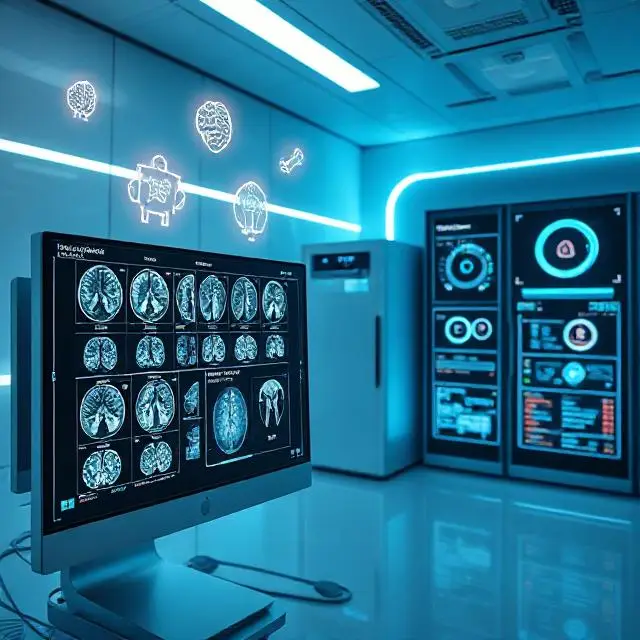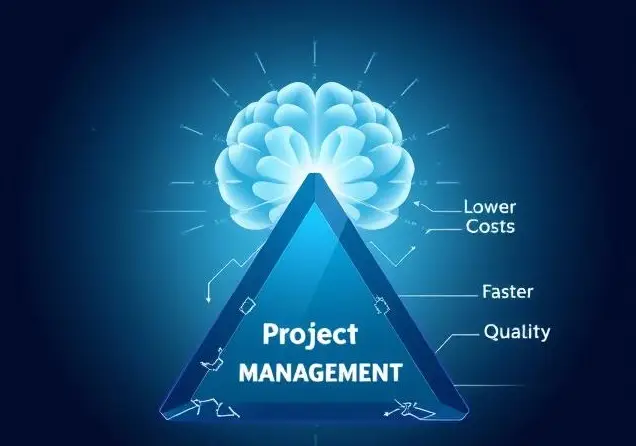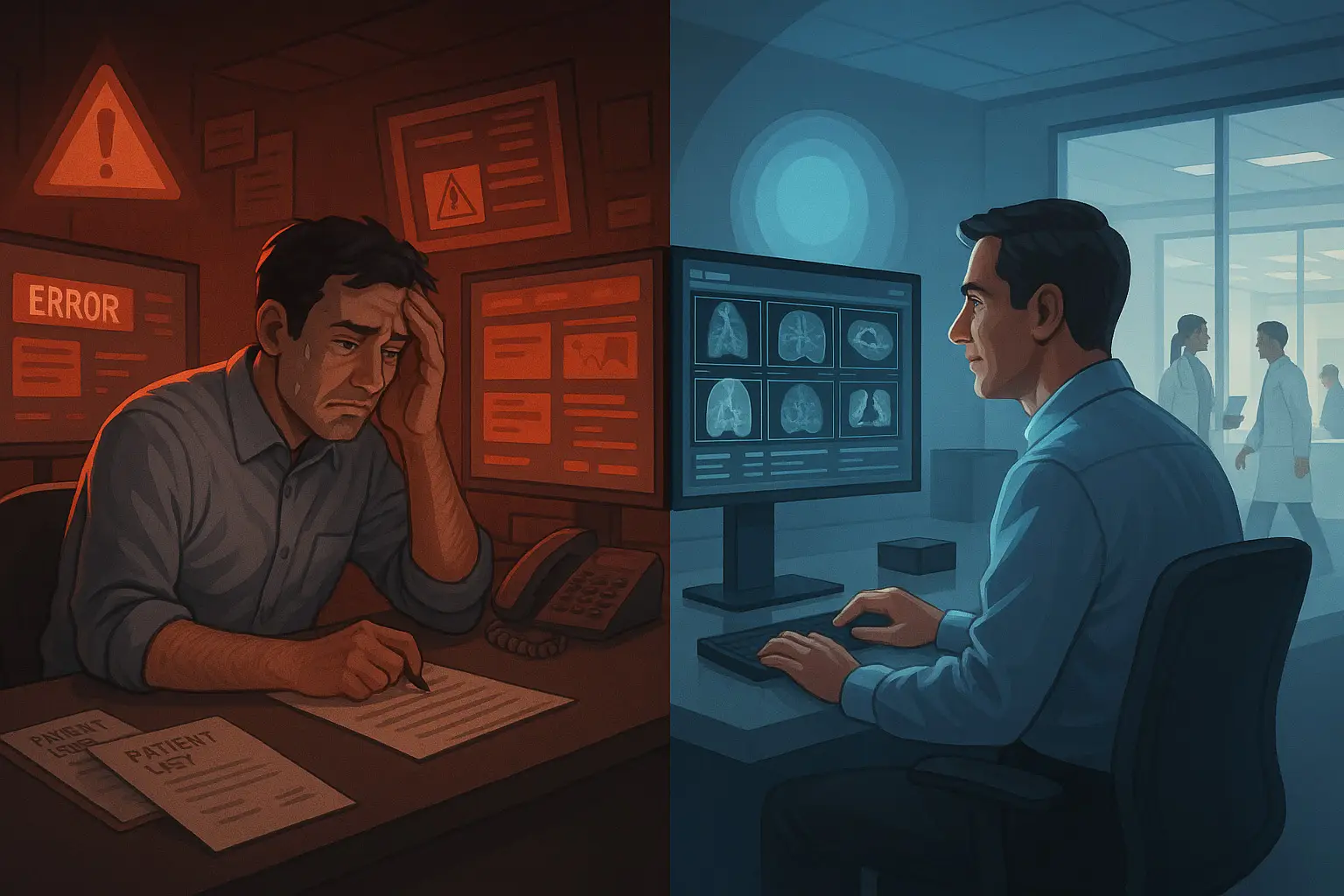Radiology plays a vital role in healthcare, aiding in the diagnosis and treatment of almost all medical conditions (we’d like to see if someone could come up with one medical condition that doesn’t involve imaging). Behind the scenes, radiologists and radiology technologists follow a structured workflow to ensure accurate and timely imaging studies. We hope to shed some light on where efficiency breakdown occurs in the process from referral to diagnosis.
Referral and Scheduling:
The journey begins when a healthcare provider refers a patient to obtain imaging. The radiology department schedules the appointment with the patient and the patient waits.
Patient Check-in:
Upon arrival at the radiology department, patients provide personal and insurance information, sign consent forms, and answer any pertinent questions.
Preparation:
Preparation requirements may vary depending on the imaging procedure. Patients might need to fast before certain scans or ingest contrast agents to enhance the visibility of specific structures.
Imaging Procedure:
Once prepared, patients are taken to the imaging suite or room where radiology technologists perform the imaging procedure. They position the patient, adjust equipment settings (MR, CT, XR, US machines), and ensure patient comfort and safety during the procedure.
Image Acquisition:
This is the stage where the imaging data starts it’s journey. The radiology tech captures images of the specific area of interest for the patient. After capturing the images, the tech may enter relevant metadata associated with the images. This metadata may include patient identification information, imaging modality used, imaging parameters, date and time of acquisition, and any other details necessary for proper documentation and organization of the images. The metadata entered is very important to how the rest of the radiology workflow goes. The success of the radiology workflow is directly related to the study and series descriptions entered; it is used to determine where the study gets routed, how easily a radiologist reads and interprets the images, which AI algorithm may be needed, how smooth the billing and reimbursement process goes, and more. Hospitals or facilities using ENDEX™ have a greater success with their workflow. Computer vision (CV) and natural language processing (NLP) standardizes the data to a normalized ontology and terminology. This happens automatically after the tech enters the metadata, and before the data goes through the Picture Archive Communications System (PACS) to the radiologist.
Image Interpretation:
The acquired images are then transferred to the radiologist who meticulously reviews the images to identify and analyze any abnormalities or relevant findings. They compare the images to previous studies if available, leveraging their expertise to arrive at accurate interpretations. When ENDEX is applied to the data, facilities enable consistent comparisons, efficient data exchange, automation, integration with clinical data, and supporting research efforts. These benefits contribute to more accurate interpretations, enhanced collaboration, and improved patient care.
Reporting:
Radiologists generate detailed reports summarizing their findings, impressions, and recommendations. These reports serve as crucial diagnostic tools for the referring healthcare providers. The reports contain descriptions of observed abnormalities, potential diagnoses, and suggestions for further actions, such as additional imaging studies or consultations with specialists.
There are challenges that occur in this stage of the radiology workflow due to poor data. To solve them, facilities need to improve data completeness and quality through standardized protocols for data collection.
Communication of Results:
The referring healthcare provider communicates the radiology report to the patient. They discuss the findings, explain the diagnosis, and recommend appropriate treatment options. Effective communication ensures that patients understand their results and are actively involved in their healthcare decisions.
Why Understand the Radiology Workflow
The workflow in radiology involves a series of crucial steps that contribute to accurate diagnoses and effective patient care. By understanding this workflow, patients can appreciate the behind-the-scenes efforts of radiology professionals and gain insights into the process that contributes to their diagnosis and treatment.








